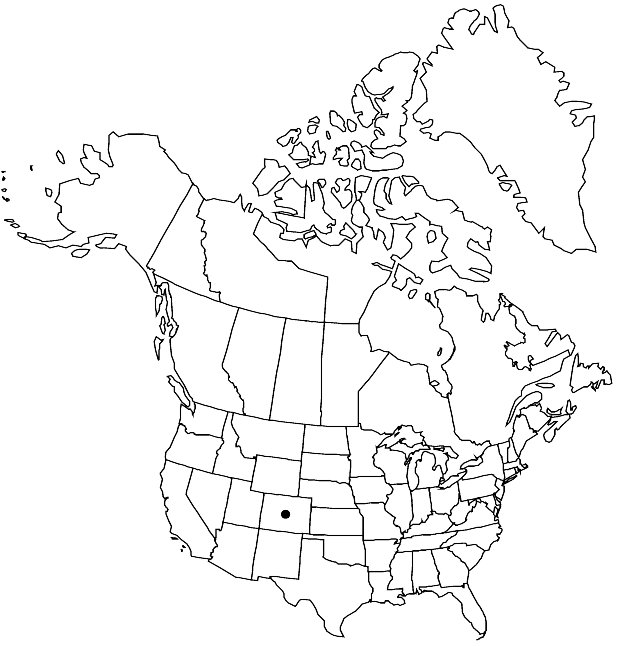Draba streptobrachia
Brittonia 32: 168. 1980.
Perennials; caudex branched (often with persistent leaf remains, branches not creeping); not scapose. Stems unbranched, (0.1–)0.2–1(–1.3) dm, pubescent throughout, trichomes subsessile (often crisped), 3–5-rayed, stellate, 0.03–0.25(–0.4) mm, (rays sometimes forked). Basal leaves rosulate; petiole (obscure), usually not ciliate, rarely sparsely pubescent, (trichomes simple, to 0.6 mm); blade oblanceolate to linear-oblanceolate, (0.4–)0.5–3(–4) cm × 1–5 mm, margins entire, surfaces pubescent with short-stalked (crisped), 3–8-rayed trichomes, 0.05–0.4 mm. Cauline leaves (1 or) 2–4 (or 5); sessile; blade oblong to ovate or linear, margins entire, surfaces pubescent as basal. Racemes 4–10(–18)-flowered, ebracteate, elongated in fruit; rachis not flexuous, pubescent as stem. Fruiting pedicels ascending, usually straight, rarely curved upward, (2–)3–8(–12) mm, pubescent as stem. Flowers: sepals ovate, 2–3 mm, pubescent, (trichomes simple and short-stalked, 2–4-rayed); petals yellow, spatulate, 3–5 × 1.5–3 mm, (clawed); anthers ovate, 0.25–0.4 mm. Fruits (not appressed to rachis), ovate to elliptic or lanceolate, slightly twisted or plane, flattened, (3–)5–10 × 2–4 mm; valves often pubescent, occasionally glabrous, trichomes simple and minutely stalked, 2–4-rayed, 0.03–0.25 mm; ovules 10–16(–18) per ovary; style 0.3–0.8(–1.2) mm. Seeds oblong, 1–1.6 × 0.6–1 mm. 2n = ca. 64.
Phenology: Flowering Jul–Aug.
Habitat: Alpine tundra, scree, ridges and alpine slopes, turf, fellfields, talus slopes, crevices in rock ledges, loose soils
Elevation: 3200-4000 m
Distribution

Colo.
Discussion
As indicated by Price, Draba streptobrachia is an apomict, yielding abundant, well-developed seed despite producing only abortive pollen. Morphological studies (M. D. Windham, unpubl.) suggest that the species may be an allopolyploid containing a genome from D. crassa.
Selected References
None.